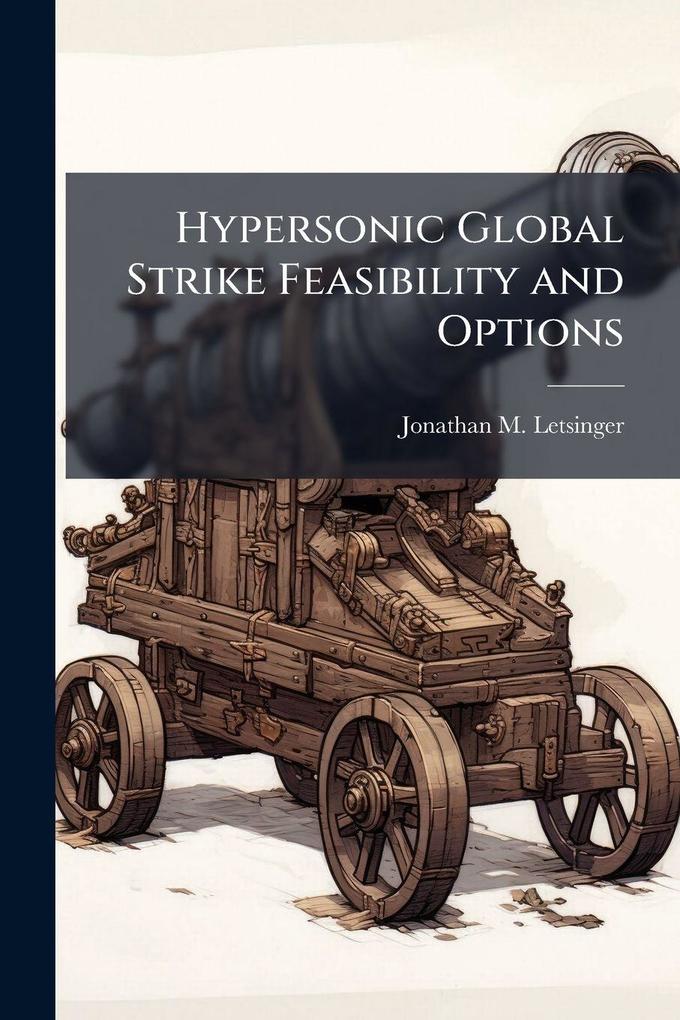Bücher versandkostenfrei*100 Tage RückgaberechtAbholung in der Wunschfiliale
15% Rabatt11 auf ausgewählte eReader & tolino Zubehör mit dem Code TOLINO15
Jetzt entdecken
mehr erfahren
Zustellung: Di, 09.09. - Sa, 13.09.
Versand in 2 Wochen
VersandkostenfreiBestellen & in Filiale abholen:
This paper explores the feasibility of hypersonic weapons and aircraft as global strike options in the 2035 timeframe. The paper proposes there are currently two limitations or gaps in U.S. prompt global strike capabilities; timeliness, and increasingly the ability to gain access to the highly-defended target area. Additionally, the USAF has a long history of using advanced technology to stay ahead of the threat defense systems and gaining access to target sets, and by 2035, anti-access and area denial (A2/AD) technologies will increasingly threaten the USAF ability to hold any target on the globe at risk. Therefore, given the fact that technologies will continue developing to diminish and deny the advantages of stealth and space assets, could speed once again allow access to denied, heavily defended targets and close the gap for prompt global strike by 2035? The analysis begins with a brief overview of past hypersonic programs and reveals the lack of coherent government policy or USAF confidence in future military utility for hypersonic weapons or aircraft.
This work has been selected by scholars as being culturally important, and is part of the knowledge base of civilization as we know it. This work was reproduced from the original artifact, and remains as true to the original work as possible. Therefore, you will see the original copyright references, library stamps (as most of these works have been housed in our most important libraries around the world), and other notations in the work.
This work is in the public domain in the United States of America, and possibly other nations. Within the United States, you may freely copy and distribute this work, as no entity (individual or corporate) has a copyright on the body of the work.
As a reproduction of a historical artifact, this work may contain missing or blurred pages, poor pictures, errant marks, etc. Scholars believe, and we concur, that this work is important enough to be preserved, reproduced, and made generally available to the public. We appreciate your support of the preservation process, and thank you for being an important part of keeping this knowledge alive and relevant.
This work has been selected by scholars as being culturally important, and is part of the knowledge base of civilization as we know it. This work was reproduced from the original artifact, and remains as true to the original work as possible. Therefore, you will see the original copyright references, library stamps (as most of these works have been housed in our most important libraries around the world), and other notations in the work.
This work is in the public domain in the United States of America, and possibly other nations. Within the United States, you may freely copy and distribute this work, as no entity (individual or corporate) has a copyright on the body of the work.
As a reproduction of a historical artifact, this work may contain missing or blurred pages, poor pictures, errant marks, etc. Scholars believe, and we concur, that this work is important enough to be preserved, reproduced, and made generally available to the public. We appreciate your support of the preservation process, and thank you for being an important part of keeping this knowledge alive and relevant.
Produktdetails
Erscheinungsdatum
22. Mai 2025
Sprache
englisch
Untertitel
Sprache: Englisch.
Seitenanzahl
62
Autor/Autorin
Jonathan M Letsinger
Verlag/Hersteller
Produktart
kartoniert
Gewicht
100 g
Größe (L/B/H)
234/156/3 mm
ISBN
9781025135809
Bewertungen
0 Bewertungen
Es wurden noch keine Bewertungen abgegeben. Schreiben Sie die erste Bewertung zu "Hypersonic Global Strike Feasibility and Options" und helfen Sie damit anderen bei der Kaufentscheidung.









